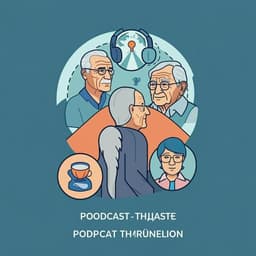
Medicine and Health
Social determinants of health and COVID-19: An evaluation of racial and ethnic disparities in attitudes, practices, and mental health
J. R. Patel, C. C. Brown, et al.
Discover the intriguing findings of a study by Jenil R Patel, Clare C Brown, T Elaine Prewitt, Zain Alfanek, and M Kathryn Stewart that investigates the complex interplay between social determinants of health, race, and mental health outcomes during the COVID-19 pandemic. This research uncovers how social inequities impact health behaviors and highlights the need for addressing these issues, especially in rural areas like Arkansas.
~3 min • Beginner • English
Related Publications
Explore these studies to deepen your understanding of the subject.







